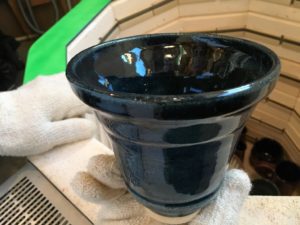Author: Curtis
RV roof
More Pottery 3
I am back online!
I hadn’t posted for 3 years, and lots of administrative stuff was outdated and the site crashed. But I am back now and looking forward to posting articles that may be of interest. Welcome back!
Genealogy 1
Who made you? These people made me. (apparently you need to click on the figure to be able to read it!)
Pottery 3, Recent Greenware
Wanted to share a few pieces I’ve been working on over the last week. They are “greenware”, or unfired. Dropped into a puddle, and they become mud. They will have tor dry at least a couple of weeks before firing,…
Flight over Harpers Ferry
Last November I became a pilot. Passengers can now go with me on flights, and I delight in sharing the local area from the air. My plane has a new engine overhaul, a professional cleaning, and is finally in a…
Glaze firing results from last week
Glaze firings are always exciting, nerve-racking, and require more patience than I have. “Is cool enough yet?” “Is it cool enough now” is the “are we there yet?”s of children translated to adult impatience. The kiln went to 2232 degreesF (cone 6 in pottery lingo), took 17 hours counting the 10 hour pre-heat, and then hours more to cool.
Simple form items on hand were fired to test old, dried glazes and test new glazes. Here are a few as they were pulled out of the kiln, still a bit hot (~200F). I have added on the right more formal pictures, and the contrast installing–careful photos are usually better than snapshots for pottery!
This one has two new nice glazes, “cinnamon,” and “blue surf.” The outside “blue surf” is gorgeous and deeply interesting even on a smooth surface. This picture doesn’t capture it.
This “Storm” glaze covered several pieces, sometimes half and half with mixing clear, other times straight up. (I like the snap shot better!)
This piece is the Storm glaze mixed, and varied thin and thicker. The swirls turn this into a quite interesting piece for a simple bowl.
Storm with mixing clear shows how the glaze breaks over a textured surface.
I had old jars of turquoise and speckled white that had to be mixed. And mixed. And mixed. But the result was worth it. The outside turquoise was uniform and just a bright cheery color I was after. (Color is closer in the snapshot!)
Several recent bottles of “celadons” were screaming to be tested. This first one was just one color graduating into the next. I expected a smoother transition and no light areas, but i still like the effect that resulted.
This one was interesting. The celadons were not mixed ahead of time (as in the previous one), but were just overlapped. I expected more blending in the overlaps, but the top colors dominated. Lesson: They don’t mix themselves, I have to do it in advance. Still, very pretty. (Snapshot is more in focus but color is more accurate in studio version.).)
This plate took the longest. It has waited a couple of years for glazing. The bisque plate’s design is raised (or really, I protected the design with wax and washed away the surrounding clay). The cherry blossom color came first, then I scraped the dry glaze off the design before adding the colors to the leaves (Jade), stems (Storm), and grapes (Marigold). The outside rim in Storm. The plate is wavy, but it is still my favorite from the firing. What was yours?
Added one
The Three Keys
The Three Keys were Josh Blinder, Erik Cohen,and myself because, well, it looked like we were always playing in three different keys. It didn’t sound that way usually, or the audiences would have rebelled. Josh had his autoharps tuned to…
Pottery 1
Eleven years ago, this pot grew from a lump of clay into this form. I often am not certain what i am going to throw when I start. This is not a Michelangelo “I find the figure hidden in the…















